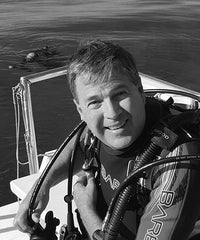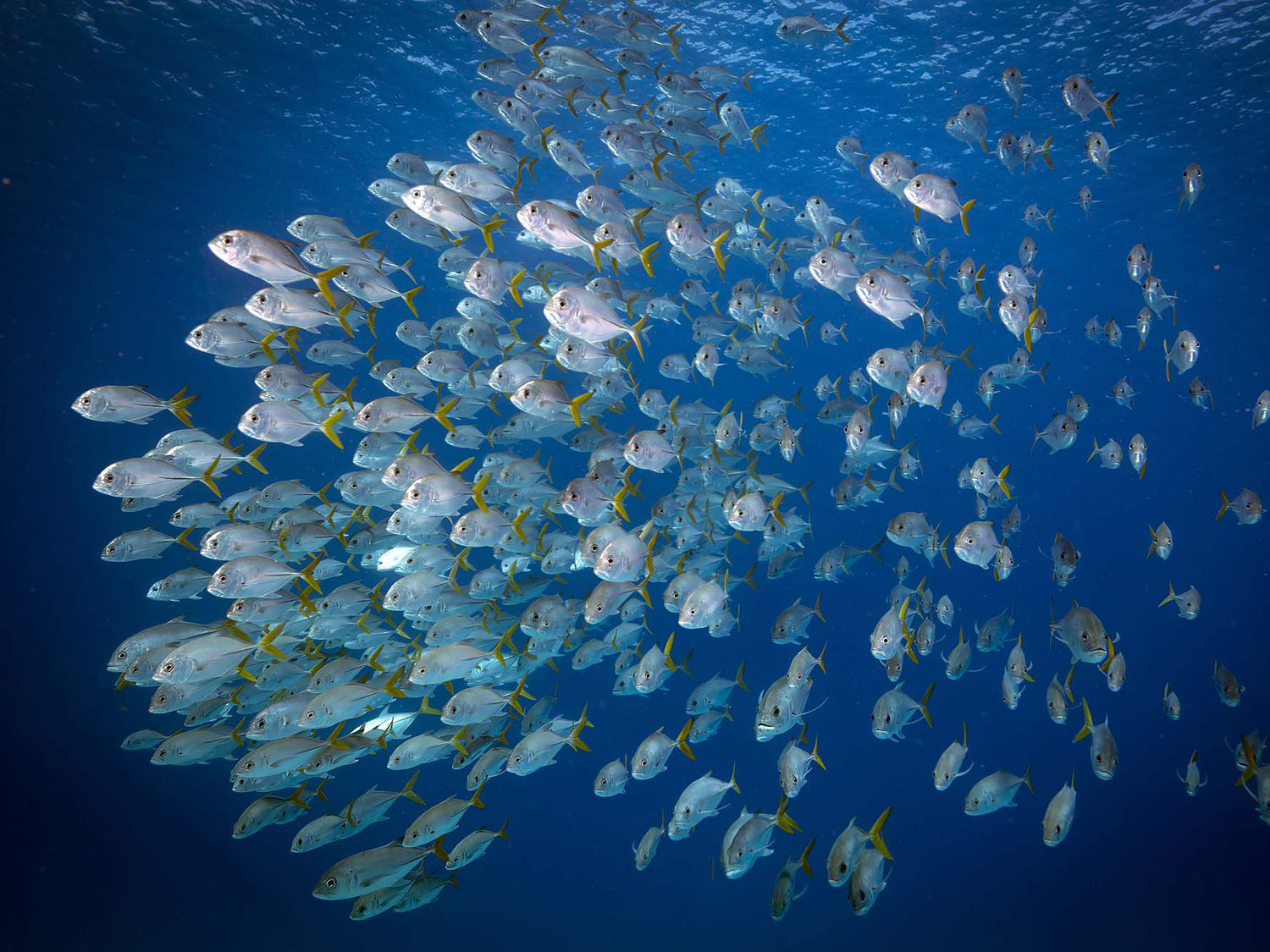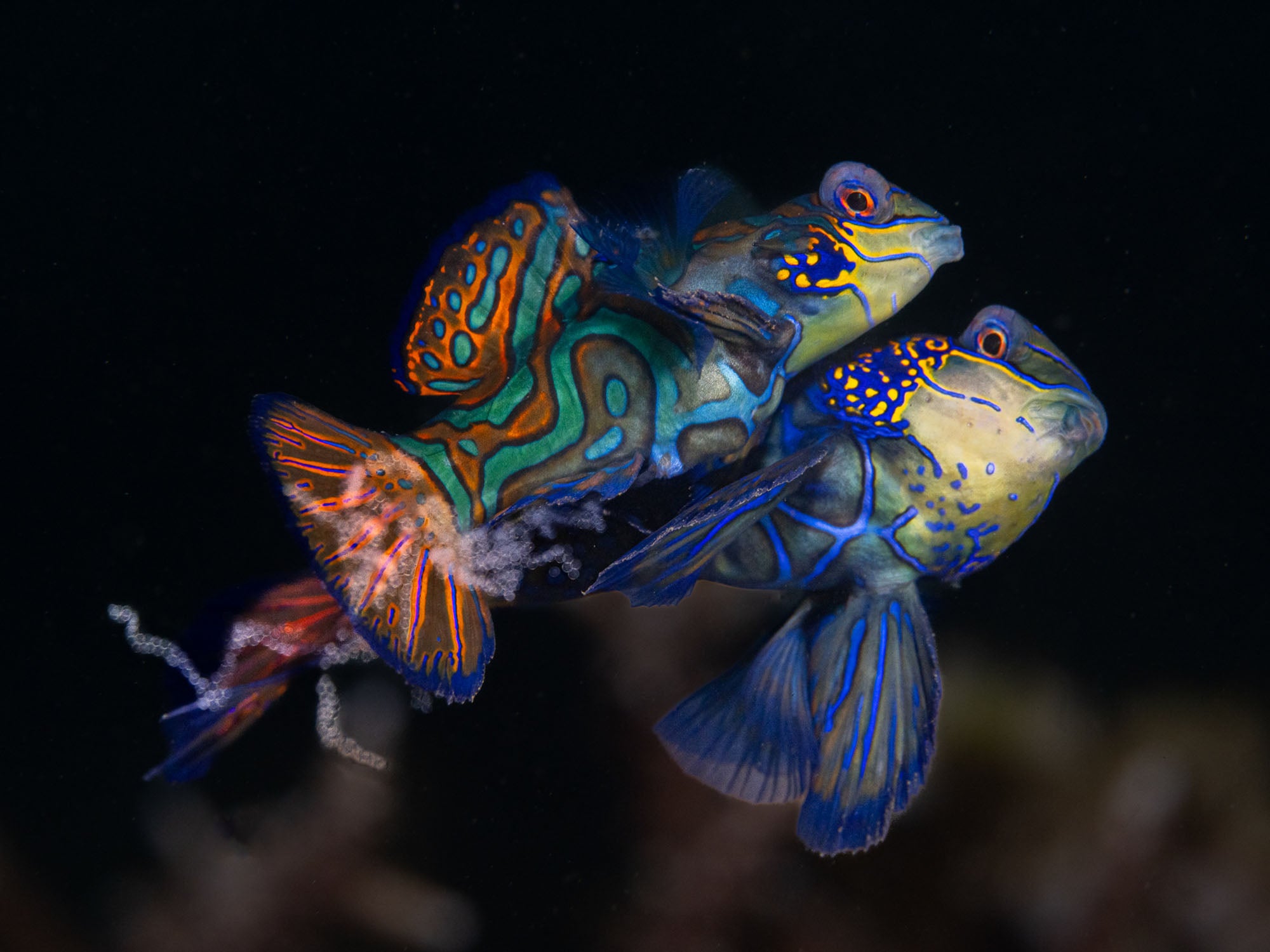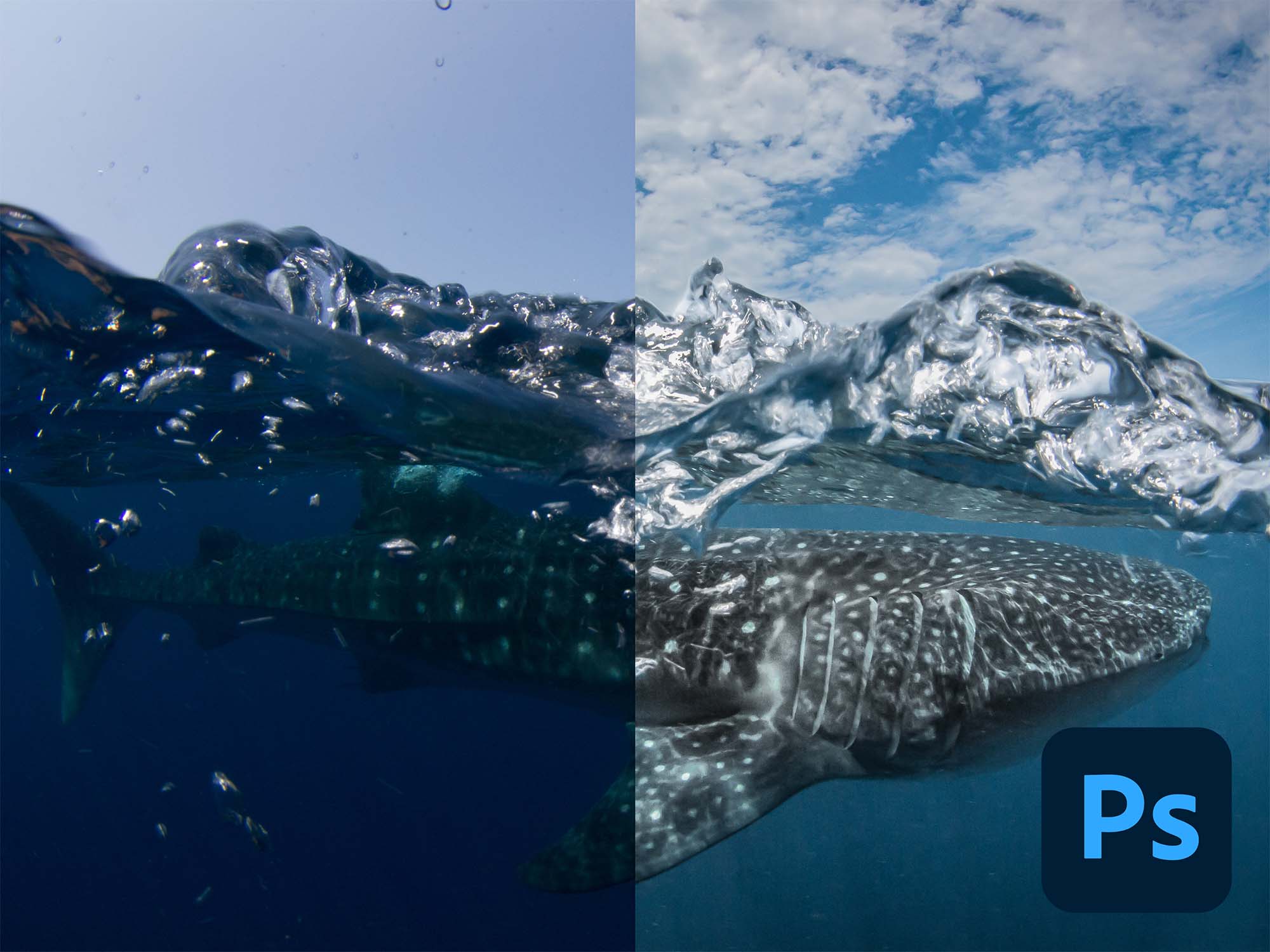By Gary Burns
Over the past few months I have been diving with my buddy at the dive park at California’s Catalina Island. The island has been host to the largest school of mackerel I have seen since I started diving the island over seven years ago.
The kelp bed has grown significantly during the spring time. As you enter the water from the steps at Casino point, you are engulfed in the kelp, which adds some complexity to how you manipulate your underwater housing and strobes through the water column as you descend to your profile depth. Dive conditions at the Casino dive park in the May time frame are typically 62ºF with 30-40 feet (9-12 meters) visibility depending on the time of day and light conditions.
Our last adventure to the island, I spent all of my dives experiencing the dynamics of the schooling Mackerel and trying to understand how to capture images that showcased the behavior of these magnificent shoals of fish, interacting seamlessly with each other.
Fish shoals are an amazing sight to witness, they can make stunning images for friends and family to enjoy. My dive buddy has re-baptized me “The Shoal Chaser” not that I chase them, I just like to observe the schooling fish.

Gary "The Shoal Chaser" photographing a school of fish in Grand Cayman. Image © Steve Miller.
Why Do Fish Shoal?
The questions that come to mind while just watching and experiencing this low frequency wave fish behavior: why do the fish react like this, is it for protection, a mating ritual, or the chance of finding food easier?
From reading several articles that evening, on why fish shoal together, studies have shown that fish in shoals find food faster and spend more time actually feeding.
From my recent experience, I noticed that there is always a leading fish, that all the troops follow, the lead fish rotates position especially when a predator comes into the pack. It’s an extremely interesting dynamic to observe. It’s very similar behavior to flocks of birds in flight.
Challenges and Solutions for Underwater Photographers
The challenge for an underwater photographer is how do you capture the shoaling fish in their natural environment, without interfering and without frightening them into moving or changing directions.
One of the main concerns we face as divers is the impact of our air bubbles - as they create chaos within the school - while we intertwine with the shoal. An oxygen re-breather diving setup would be ideal for this underwater photography situation, but very expensive.
During my first dive with the shoaling mackerel, I kneeled on the ocean floor and let the twisting and turning shoal get used to my presence. Once the mackerel realized that I was only there to observe and not pose a threat, the shoal swam around me almost as if I wasn’t there.

"Underwater photography provides another insight to this wonderful world we have the privilege to experience and the opportunity to be creative with our photography." © Gary Burns
The next challenge was how to interact in the mid water column so that you are completely surrounded by the shoal. I started to swim upwards slowly while controlling my buoyancy and breathing slowly. It did take several attempts but eventually I was completely surrounded in a 360º wall of mackerel, it’s a life changing and bucket list experience to have the opportunity to witness this magnificent site.
The only other time I have had the privilege of this experience was in Grand Cayman diving with the Ikelite team. At the end of a dive, the yellow tail jacks were schooling close to the boat during a safety stop, my dive buddy and I swam around a very calm shoal. Eventually the yellow tail jacks accepted us as underwater photographers and didn’t seemed threatened, I was really surprised how close they came to us.
Lighting and Lenses
So how do you take images that reflect the behavior of the schooling fish?
The following questions come to mind: what lens should I use, what aperture should I set due to the changing light conditions, should I be on the ocean floor or in the middle of the shoal, should I consider using ambient light and therefore switch off my strobes, or even remove the supporting strobe geometry to give more flexibility and move around much more freely?
If I switched off the strobes this allowed me to get a little closer to the fish. Be aware if you use you strobes in the shallow water that the fish scales reflect the strobe light and cause the highlights to become over exposed in the final image.
My main challenge was to capture an image of the complete shoal with the fish in a tight and natural shape. From much trial and error and image review underwater, I found that you are more likely to achieve the natural shoal shape if you are back or in front from the fish and hence not disturbing their natural state.

Swarm behavior is seen across the animal kingdom from schooling fish to flocking birds and even in plants, like phytoplankton blooms. Capturing the natural shapes of these swarms provides a sense of movement to your image. © Gary Burns
Because the shoals can be very large, I chose a 8-15mm lens with my Canon R5 camera body and Ikelite housing. The wide-angle lens provides you with the optimum coverage of a large shoal of fish, while still maintaining a reasonably close distance to the school. There is one concern about using the fish eye lens you must be aware of that the leading fish in the shoal can get distorted. My quick fix was to swap out my fisheye lens for a Canon 18-45mm lens, this did help reduce the distortion concern.
Exposure Settings
Like most underwater photographers, trying to achieve the right exposure and sharpness is key to the ideal shot. My first few images are based at the depth I was at and the ambient light conditions based on the available light and visibility conditions.
I tried to create an exposure using the aperture control while maintaining a fixed shutter speed to match the synchronization speed of the strobes, typically 1/160 second. The objective of correct exposure setting is to match the water color to blue rather than green background, this does imply that you have to try and maintain your depth profile and position to keep the exposure constant. The kelp fields ascend to the surface with large gaps in-between each strand of kelp.

By using the kelp as a backdrop, with the fish centered between the kelp, you can achieve some wonderful images of the schooling fish. © Gary Burns
If ambient light conditions are dark I would recommend to set between ISO 200 to ISO 400, but in shallow condition I normally set the ISO to 100, F8 and 1/160 second.
The time of day and ambient light conditions dictate your exposure settings and if you’re lucky, you have light rays penetrating the water column which adds further interest to how you compose and create the final image.
Composition and Post-Processing
Composition is key to creating the ideal image. From my experiences at Catalina Island I found shooting a tightly bound shoal in a diagonal direction works very well.
Post processing in Lightroom and Photoshop allows the creative aspect of the image to develop. Not all my images work well in color, as black and white images allow the shape of the schooling shoal and any ambient sun light rays to shine into the final image. Having your dive buddy in the shot also provides interest and gives an impression of the relative size of the fish shoal.

Editing photos becomes an art of its own. It has the power to change the entire mood of an image and can be a powerful tool for underwater photographers. © Gary Burns
I have been diving now for almost 50 years and still experience the same fascination as my first dive. Underwater photography provides another insight to this wonderful world we have the privilege to experience and the opportunity to be creative with our photography.
I am always learning and would honestly believe that there is no exact recipe to capture images underwater. The images I have presented in this article were taken at 1/160 second, ISO 100 and ranged between F8 to F16, depending on the ambient lighting conditions.
 Ambassador Gary Burns is a Photographer and Aerospace Engineer. His work has taken him from his homeland of the UK to Canada to work with a leading aerospace team developing the first Challenger corporate aircraft. Gary now works out of Southern California where he dives on a regular basis in the Channel Islands off Santa Barabara and Catalina. During each adventure, the Ikelite underwater camera systems have been the perfect dive buddy. Read more...
Ambassador Gary Burns is a Photographer and Aerospace Engineer. His work has taken him from his homeland of the UK to Canada to work with a leading aerospace team developing the first Challenger corporate aircraft. Gary now works out of Southern California where he dives on a regular basis in the Channel Islands off Santa Barabara and Catalina. During each adventure, the Ikelite underwater camera systems have been the perfect dive buddy. Read more...
Additional Reading
First Results // Topaz Photo AI Enhancement of Underwater Images
Photographing the Ethereal Egg-Yolk Jellyfish
An Insider's Guide to Shore Diving Catalina Island













